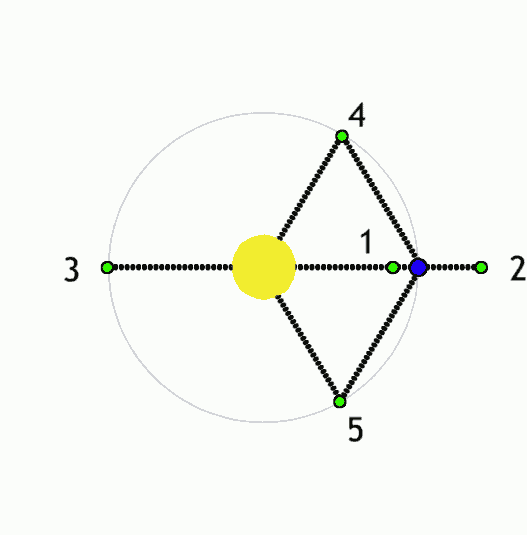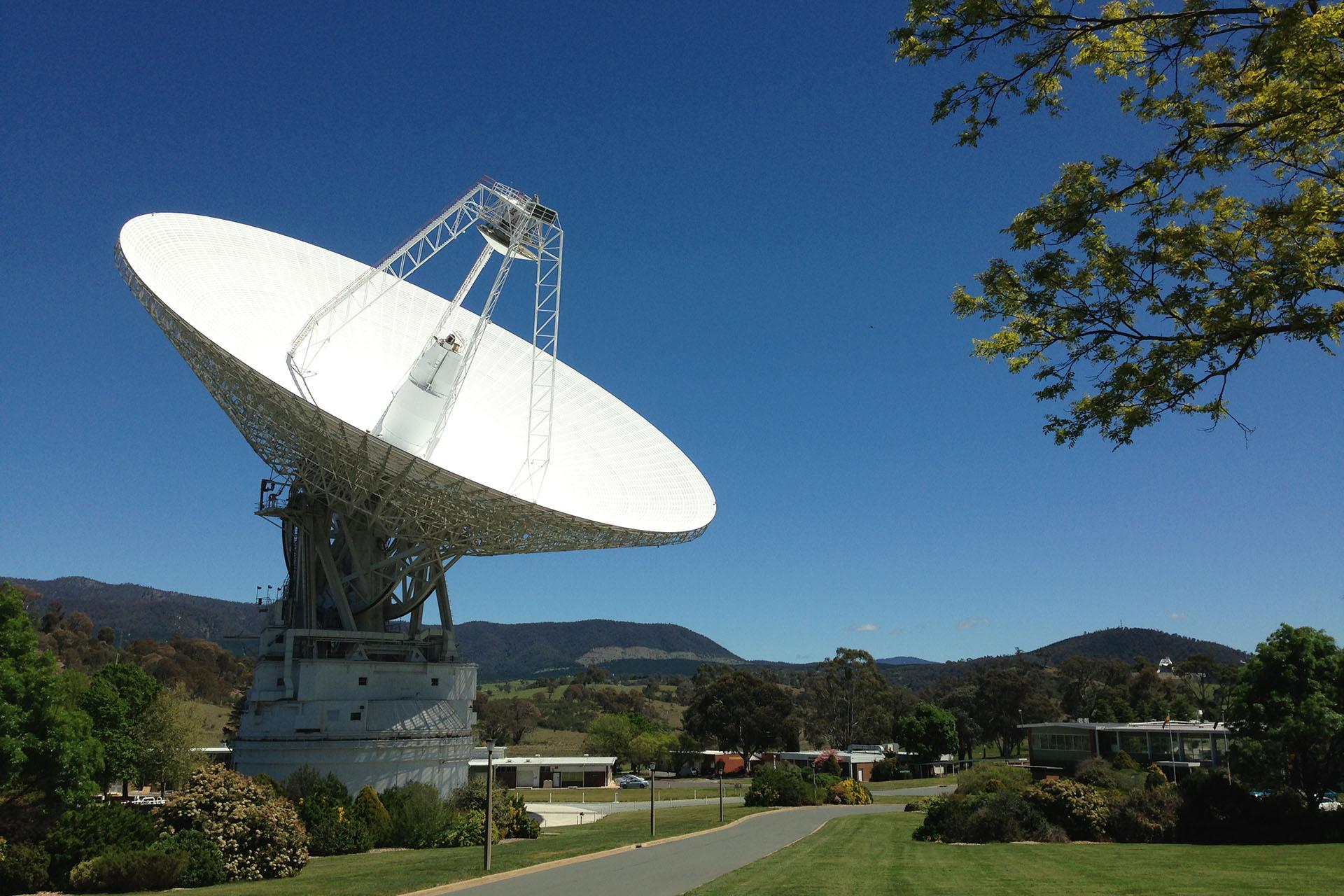|
Queqiao Relay Satellite
''Queqiao'' relay satellite (), also known as the Chang'e 4 Relay, is a communications relay and radio astronomy satellite for the Chang'e 4 lunar farside mission. As part of the Chinese Lunar Exploration Program, the China National Space Administration (CNSA) launched the Queqiao relay satellite on 20 May 2018 to a halo orbit around the Earth–Moon L2 Lagrangian point Queqiao is the first ever communication relay and radio astronomy satellite at this location. The name ''Queqiao'' ("Magpie Bridge") was inspired by and came from the Chinese tale ''The Cowherd and the Weaver Girl''. Design and development Queqiao was designed to function as a communication relay for the Chang'e 4 mission to the far side of the Moon, as well as a deep space radio astronomy observatory for the Chinese space program. Direct communication with Earth is impossible on the far side of the Moon, since transmissions are blocked by the Moon. Communications must go through a communications relay satel ... [...More Info...] [...Related Items...] OR: [Wikipedia] [Google] [Baidu] |
China National Space Administration
China National Space Administration (CNSA; ) is the government agency of the People's Republic of China that is responsible for civil space administration and international space cooperation, including organizing or leading foreign exchanges and cooperation in the aerospace field. An administrative agency under the Ministry of Industry and Information Technology, its headquarters are located in Haidian, Beijing. Founded in 1993, CNSA has pioneered a number of achievements in space for China despite its relatively short history, including becoming the first space agency to land on the far side of the Moon with Chang'e 4, bringing material back from the Moon with Chang'e 5, and being the second agency who successfully landed a rover on Mars with Tianwen-1. As the governing body of civil space activities, China National Space Administration does not execute any space program. The China Aerospace Science and Technology Corporation executes China's state space programs instead. T ... [...More Info...] [...Related Items...] OR: [Wikipedia] [Google] [Baidu] |
The Planetary Society
The Planetary Society is an American internationally-active non-governmental nonprofit organization. It is involved in research, public outreach, and political space advocacy Space advocacy is supporting or advocating for a human use of outer space. Purposes advocated can reach from space exploration, or commercial use of space to even space settlement. There are many different individuals and organizations dedicat ... for engineering projects related to astronomy, planetary science, and space exploration. It was founded in 1980 by Carl Sagan, Bruce C. Murray, Bruce Murray, and Louis Friedman, and has about 60,000 members from more than 100 countries around the world. The Society is dedicated to the exploration of the Solar System, the search for near-Earth objects, and the search for extraterrestrial life. The society's mission is stated as: "Empowering the world’s citizens to advance space science and exploration." The Planetary Society is a strong advocate for space ... [...More Info...] [...Related Items...] OR: [Wikipedia] [Google] [Baidu] |
BPSK
Phase-shift keying (PSK) is a digital modulation process which conveys Data (computing), data by changing (modulating) the Phase (waves), phase of a constant frequency reference signal (the carrier wave). The modulation is accomplished by varying the sine wave, sine and cosine wave, cosine inputs at a precise time. It is widely used for wireless LANs, RFID and Bluetooth communication. Any digital modulation scheme uses a finite number of distinct signals to represent digital data. PSK uses a finite number of phases, each assigned a unique pattern of bit, binary digits. Usually, each phase encodes an equal number of bits. Each pattern of bits forms the symbol rate, symbol that is represented by the particular phase. The demodulator, which is designed specifically for the symbol-set used by the modulator, determines the phase of the received signal and maps it back to the symbol it represents, thus recovering the original data. This requires the receiver to be able to compare the ph ... [...More Info...] [...Related Items...] OR: [Wikipedia] [Google] [Baidu] |
Deep Space Exploration
Deep space exploration (or deep-space exploration) is the branch of astronomy, astronautics and space technology that is involved with exploring the distant regions of outer space. However, there is little consensus on the meaning of "distant" regions. In some contexts, it is used to refer to interstellar space. The International Telecommunication Union defines "deep space" to start at a distance of 2 million km (approximately 0.01 AU) from the Earth's surface. NASA's Deep Space Network has variously used criteria of 16,000 to 32,000 km from Earth. Physical exploration of space is conducted both by human spaceflights (deep-space astronautics) and by robotic spacecraft. At present the farthest space probe humankind has constructed and launched from Earth is ''Voyager 1'', which was announced on December 5, 2011, to have reached the outer edge of the Solar System, and entered interstellar space on August 25, 2012. Deep space exploration further than this vessel's capacity is not y ... [...More Info...] [...Related Items...] OR: [Wikipedia] [Google] [Baidu] |
X Band
The X band is the designation for a band of frequencies in the microwave radio region of the electromagnetic spectrum. In some cases, such as in communication engineering, the frequency range of the X band is rather indefinitely set at approximately 7.0–11.2 GHz. In radar engineering, the frequency range is specified by the Institute of Electrical and Electronics Engineers (IEEE) as 8.0–12.0 GHz. The X band is used for radar, satellite communication, and wireless computer networks. Radar X band is used in radar applications including continuous-wave, pulsed, single- polarization, dual-polarization, synthetic aperture radar, and phased arrays. X band radar frequency sub-bands are used in civil, military, and government institutions for weather monitoring, air traffic control, maritime vessel traffic control, defense tracking, and vehicle speed detection for law enforcement. X band is often used in modern radars. The shorter wavelengths of the X band allow ... [...More Info...] [...Related Items...] OR: [Wikipedia] [Google] [Baidu] |
Chang'e 2
Chang'e 2 (; ) is a Chinese unmanned lunar probe that was launched on 1 October 2010. It was a follow-up to the Chang'e 1 lunar probe, which was launched in 2007. Chang'e 2 was part of the first phase of the Chinese Lunar Exploration Program, and conducted research from a 100-km-high lunar orbit in preparation for the December 2013 soft landing by the Chang'e 3 lander and rover. Chang'e 2 was similar in design to Chang'e 1, although it featured some technical improvements, including a more advanced onboard camera. Like its predecessor, the probe was named after Chang'e, an ancient Chinese moon goddess. After completing its primary objective, the probe left lunar orbit for the Earth–Sun Lagrangian point, to test the Chinese tracking and control network, making the China National Space Administration the third space agency after NASA and ESA to have visited this point. It entered orbit around L2 on 25 August 2011, and began transmitting data from its new position in September 201 ... [...More Info...] [...Related Items...] OR: [Wikipedia] [Google] [Baidu] |
NASA
The National Aeronautics and Space Administration (NASA ) is an independent agency of the US federal government responsible for the civil space program, aeronautics research, and space research. NASA was established in 1958, succeeding the National Advisory Committee for Aeronautics (NACA), to give the U.S. space development effort a distinctly civilian orientation, emphasizing peaceful applications in space science. NASA has since led most American space exploration, including Project Mercury, Project Gemini, the 1968-1972 Apollo Moon landing missions, the Skylab space station, and the Space Shuttle. NASA supports the International Space Station and oversees the development of the Orion spacecraft and the Space Launch System for the crewed lunar Artemis program, Commercial Crew spacecraft, and the planned Lunar Gateway space station. The agency is also responsible for the Launch Services Program, which provides oversight of launch operations and countdown management f ... [...More Info...] [...Related Items...] OR: [Wikipedia] [Google] [Baidu] |
Robert W
The name Robert is an ancient Germanic given name, from Proto-Germanic "fame" and "bright" (''Hrōþiberhtaz''). Compare Old Dutch ''Robrecht'' and Old High German ''Hrodebert'' (a compound of '' Hruod'' ( non, Hróðr) "fame, glory, honour, praise, renown" and ''berht'' "bright, light, shining"). It is the second most frequently used given name of ancient Germanic origin. It is also in use as a surname. Another commonly used form of the name is Rupert. After becoming widely used in Continental Europe it entered England in its Old French form ''Robert'', where an Old English cognate form (''Hrēodbēorht'', ''Hrodberht'', ''Hrēodbēorð'', ''Hrœdbœrð'', ''Hrœdberð'', ''Hrōðberχtŕ'') had existed before the Norman Conquest. The feminine version is Roberta. The Italian, Portuguese, and Spanish form is Roberto. Robert is also a common name in many Germanic languages, including English, German, Dutch, Norwegian, Swedish, Scots, Danish, and Icelandic. It can be use ... [...More Info...] [...Related Items...] OR: [Wikipedia] [Google] [Baidu] |
Orbital Station-keeping
In astrodynamics, orbital station-keeping is keeping a spacecraft at a fixed distance from another spacecraft or celestial body. It requires a series of orbital maneuvers made with thruster burns to keep the active craft in the same orbit as its target. For many low Earth orbit satellites, the effects of non-Keplerian forces, i.e. the deviations of the gravitational force of the Earth from that of a homogeneous sphere, gravitational forces from Sun/Moon, solar radiation pressure and air drag, must be counteracted. The deviation of Earth's gravity field from that of a homogeneous sphere and gravitational forces from the Sun and Moon will in general perturb the orbital plane. For a sun-synchronous orbit, the precession of the orbital plane caused by the oblateness of the Earth is a desirable feature that is part of mission design but the inclination change caused by the gravitational forces of the Sun and Moon is undesirable. For geostationary spacecraft, the inclination change ... [...More Info...] [...Related Items...] OR: [Wikipedia] [Google] [Baidu] |
Lissajous Orbit
In orbital mechanics, a Lissajous orbit (), named after Jules Antoine Lissajous, is a quasi-periodic orbital trajectory that an object can follow around a Lagrangian point of a three-body system without requiring any propulsion. Lyapunov orbits around a Lagrangian point are curved paths that lie entirely in the plane of the two primary bodies. In contrast, Lissajous orbits include components in this plane and perpendicular to it, and follow a Lissajous curve. Halo orbits also include components perpendicular to the plane, but they are periodic, while Lissajous orbits are usually not. In practice, any orbits around Lagrangian points , , or are dynamically unstable, meaning small departures from equilibrium grow over time. As a result, spacecraft in these Lagrangian point orbits must use their propulsion systems to perform orbital station-keeping. Although they are not perfectly stable, a modest effort of station keeping keeps a spacecraft in a desired Lissajous orbit for a long ... [...More Info...] [...Related Items...] OR: [Wikipedia] [Google] [Baidu] |



